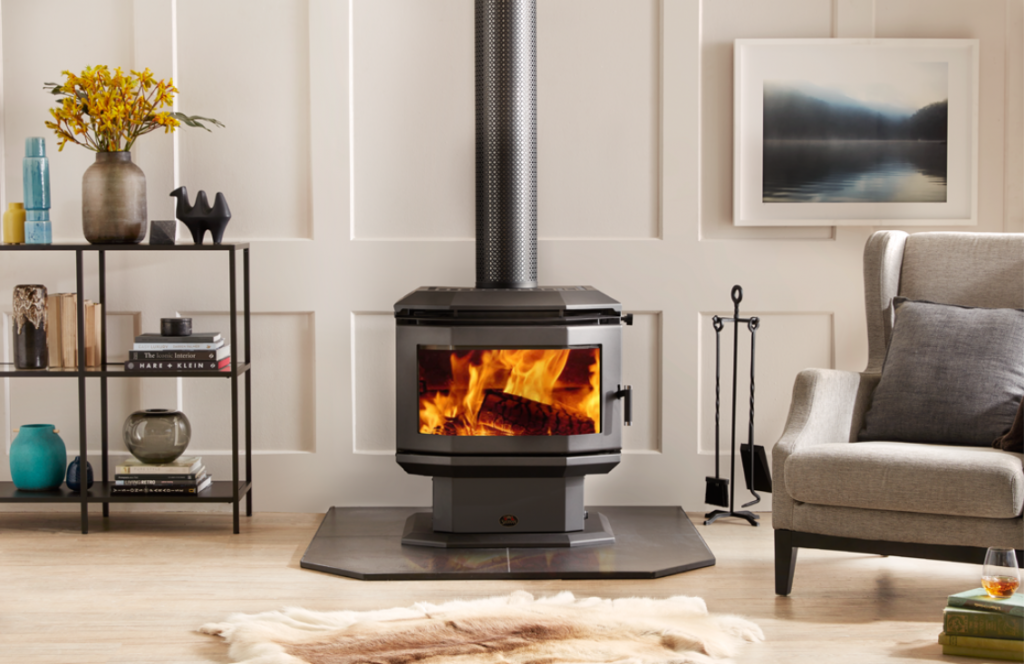
Having a fireplace in your home can really enhance its beauty. The question is what kind of fireplace would be best for your home? With so many options available in the market today – wood, gas, electric, in-built, freestanding – which one do you choose?
In this article, we focus on the pros and cons of buying a freestanding wood fireplace.
Pros of a Freestanding Wood Fireplace
Here are some of the top benefits of installing a freestanding wood fireplace in your home:
- High Efficiency
Many wood-burning freestanding fireplaces use cast iron in their construction, so the heat is diffused evenly, and the result is an ambient, comfortable room temperature.
- Using a Renewable Resource
If you ensure that you source your wood logs for your fireplace from a responsible dealer who gets their supplies from a well-managed woodland, then you will also be using a renewable resource.
Even better, if you use pellets that are made from compressed woody biomass, which means that no trees get cut down – you are using the leftover waste from other sources.
- Carbon Neutral
The carbon dioxide that is emitted when you burn wood is almost equal to the amount absorbed by the tree during its growth. This makes wood burning, when done responsibly, largely carbon-neutral.
Added to this, when wood is left to rot, it gives out carbon dioxide
?, so if you use deadwood for your fireplace, you can actually help a forest grow better and also do your part to reduce the hazard of fire in a forest.
- Placement Flexibility
The thing about a freestanding fireplace is that you have much more flexibility about where you want to place it, as long as there is a possibility to run a vent pipe to the outside. In fact, just a few well-placed freestanding wood fireplaces can replace a central heating system.
- Cost-Effective Heating
As a fuel source, wood is less expensive that oi, gas or even electricity. And if you focus on strategic zone heating inside your home, you could end up saving as much as hundreds of dollars in your energy bills.
- No Worries About Power Outages
When you have a freestanding wood fireplace, you don’t need to worry about your home remaining heated even if there is a power outage.
- You Can Cook on It
There are many models of freestanding wood fireplaces that can be used for cooking. So, if you practice a little, you could have a whole new cooking range!
Cons of Buying a Freestanding Wood Fireplace
While there are many, many benefits in favour of freestanding wood fireplaces, they also have some disadvantages.
- Pollution Hazard
Ok. Yes. We said that wood burning fireplaces were environmentally friendly. It’s true. However, that is the case when you ensure that you use a certified wood-burning fireplace that is designed to be non-polluting, mechanical air circulation features, and sealed burning chambers.
Traditional wood fireplaces release hazardous particulate matter (soot) and dangerous gases such as carbon monoxide and nitrogen oxide, which can kill a human being.
- Constant Supply of Wood
Unlike other fuels that can be piped, you need to ensure that you have a constant or at least steady supply of wood at hand if you are using a wood fireplace.
- Storage
You need to have extra space where you can store the wood you need for your fireplace.
- Cleaning and Maintenance
Cleaning your wood-burning fireplace can be quite a chore. All the residue (ash) after the wood has burned down needs to be cleaned out and be disposed of safely, since it is particulate matter.
